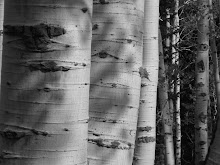Tim Egan's, The Worst Hard Time, a chronical of the American Dust Bowl of the 30's. About 30 years ago I had an elderly visiting teaching companion who had lived through those days on the high plains. I appreciated Egan's efforts to tell the story through the eyes and voices of people who lived this nightmare. When I complain about gray skies, at least my gray skies dropped rain, not silt. My gray skies nourish the plants, instead of killing them.
The story begins with a grassland that was home to 470 native species. "In the spring, the carpet flowered amid the green, and as wind blew, it looked like music on the ground." (p. 19) My part of Kansas was not plowed so heavily as the dustbowl of western Kansas, Eastern Colorado, and the Texas and Oklahoma Panhandles. Still I grew up loving the way the wheat moves in the wind, the shape of the hills formed by great seas and plenty of sky with blue days and milky way nights. Today some conservation efforts aim at the native grass lands and they are a pleasure to roam.
All that empty land looked like a great way to make money to speculators and dreamers. It looked like a great place to make a home to displaced Germans from Russia. It became a place where only the truly tenacious survived the near decade of wind and drought. Those who stayed remember dusters filled with more than just dust. They were cold in the winter, they were charged with static electricity, they weighed down roofs to the point of collapse and filled lungs and stomachs of animals and people with grit. People died of "dust pneumonia." They lived for years without income and bottled Russian Thistle (aka tumbleweed) so they would have something to put in their bellies. They tried to entice animals into eating the thistle by salting it.
"They knew black dust came from Kansas, red from eastern Oklahoma, a yellow-orange from Texas" (p. 175) No one wanted to go outside, to get lost, to get scoured, perhaps blinded by the grit. They were warned not to go out, but inside wasn't much better. The wind sifted the dust through the smallest of cracks. Wet towels placed at the doors soon became muddied. It could be dark at mid-day.
The grass wasn't the only thing disturbed by the effects of men plowing the earth. Rabbits and grasshoppers thrived and became pests. The human population nose-dived as people abandoned the farms the banks and the drought were claiming. A feeling of hopelessness blanketed those who stayed. Some stayed because they had no means of going anywhere else. All for them seemed lost. Even strong men and women would cry behind the barns hoping for privacy in their despair.
It was worth reading.
Monday, April 4, 2011
Subscribe to:
Post Comments (Atom)


3 comments:
I'm totally fascinated with the Dust Bowl time. There is a wonderful (in a deeply sad, but moving and heroic way) children's book--OUt of the Dustk--about this same time. I think I'm putting it on my books to read list. I love all the "real" books you read. I find most of my reading of late has been light and happy. I think I'm ready to read "real" things again. Maybe . . .
Mary - I've always had a hunger for biography. I want to know people, how they coped and how they overcame and how they flourished. I love History set in a novel or history told from the point of view of real people (vs wars and politics. I do read my share of "pablum" easy reading, but have little taste for the fantasy genres. Thanks for reading what I write.
This topic fascinates me, too, especially after reading a description of it first in Marc Reisner's "Cadillac Desert" and then, of course, reading that most famous book "The Grapes of Wrath." Also, the Weather Channel (which I watch a lot!) recently did a 1/2 hour feature on it on one of their shows. They included lots of pictures and footage. So interesting but SO sad. I will definitely have to check this book out. Thanks for writing about it!
Post a Comment